The current owners of this semi-basement London flat have purchased the property about a year ago. Shortly thereafter some damp patches and flaking of the paint started to show in the hallway and master bedroom. They contacted us for a survey to get the problem investigated and sorted.
Findings
After doing a thorough investigation, here is what we have found:
- The hallway wall is partly underground to about 1.5 meters. The other walls are free-standing walls with no direct contact with the soil.
- The hallway wall has a thick cement render up to about 1.5m high. The other free-standing walls are also covered by cement render. Cement being non breathable, drives humidity up.
- The plaster is also a modern cement plaster. Being non-breathable it also drives the moisture up.
- The building had dampness problems in the past, as a result he bottom of the walls has been re-plastered a few years ago with a modern cement-based renovation plaster. Whether a chemical DPC has been also installed is unknown; the are no visible chemical injection holes.
Due to the combined effect of rising damp, cement plaster and cement render the moisture inside the hallway wall has been driven upwards towards the hallway ceiling, which is only about 1 meter higher than the external ground level. The ceiling, being covered with a weaker, traditional older plaster is the weakest link of all and the humidity and ground salts start breaking down this area gradually.
In the bedroom the situation is similar. The wall has been re-plastered with a hard plaster which combined with the cement render outside drives the moisture up, above the 1m threshold which has been re-plastered in the past. The rising damp now starts breaking down the older plaster on the upper areas of the wall.
Using a high-end dampness meter the moisture content of the walls can be easily visualized. Red/orange areas are damper while dark blue areas are dry.
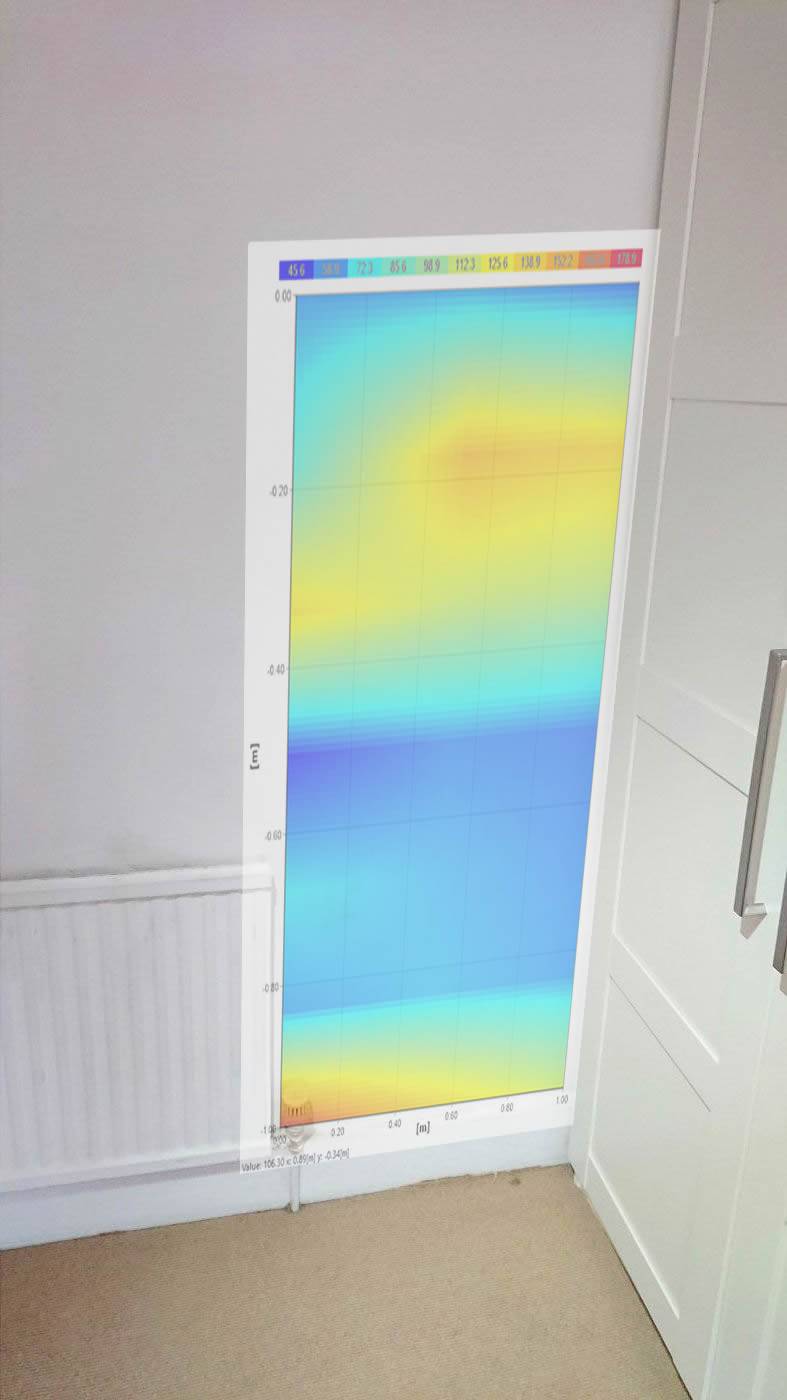
Bedroom internal wall

Bedroom external wall
Towards the bottom of the walls the moisture content is higher, while the central band looks drier. This is the new cement plaster added a few years ago. The upper areas are again damp due to its age and the crystallized salts attracting humidity from the air (hygroscopic moisture).
Here are some more images from the flat:
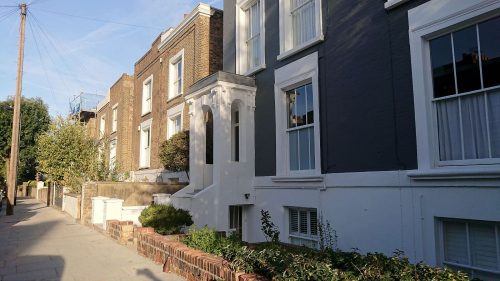
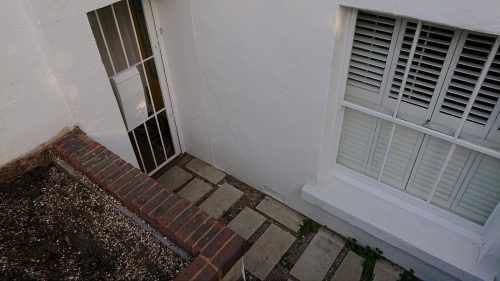
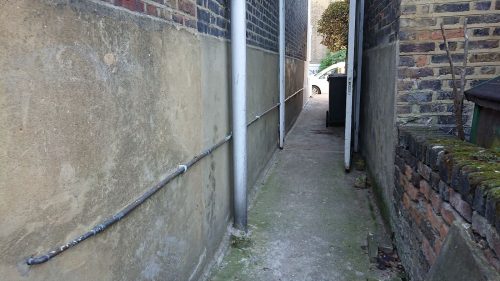
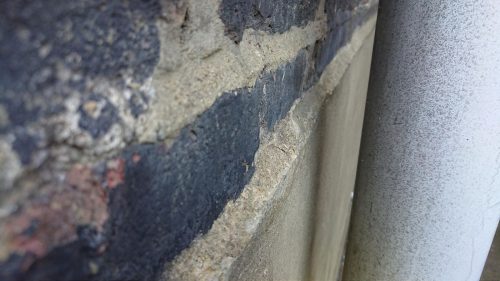
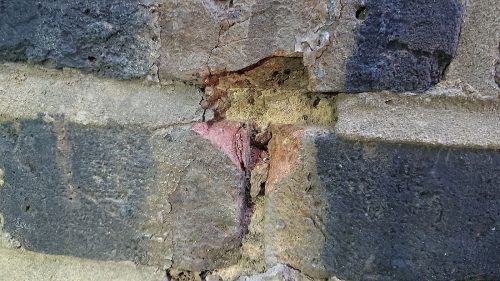
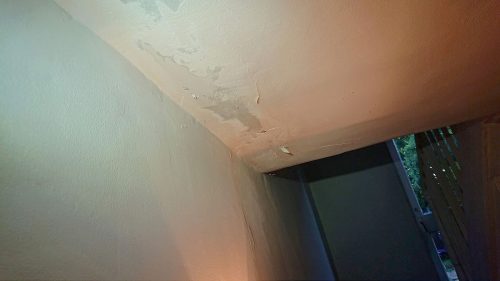
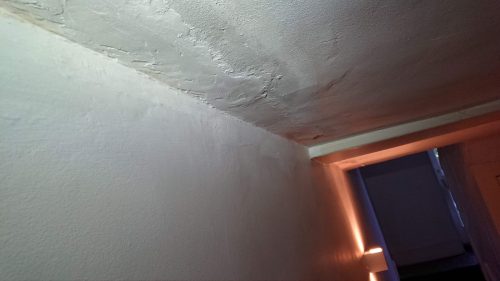
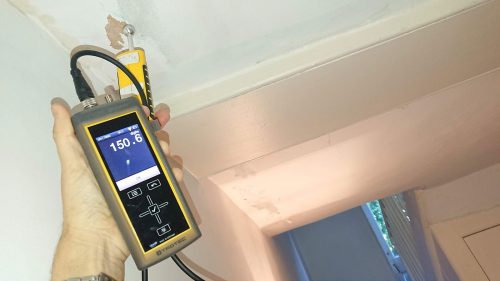
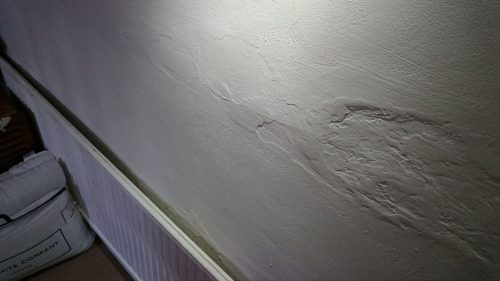
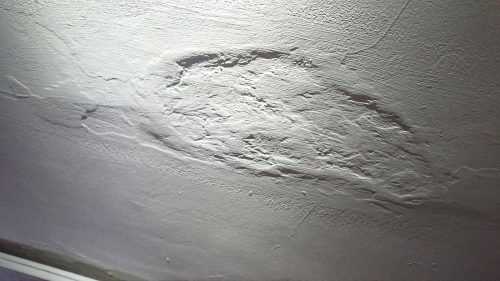
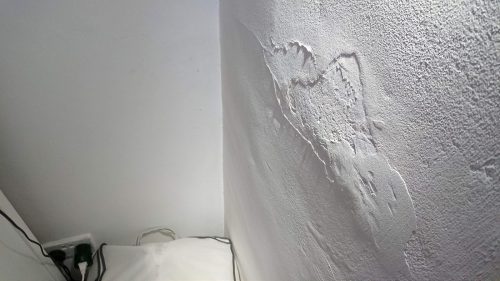
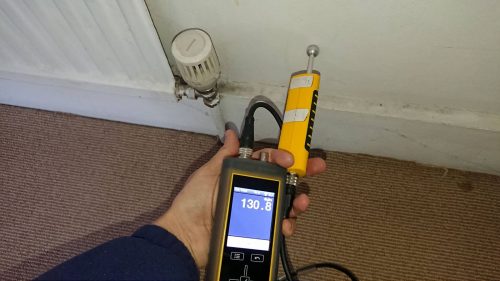
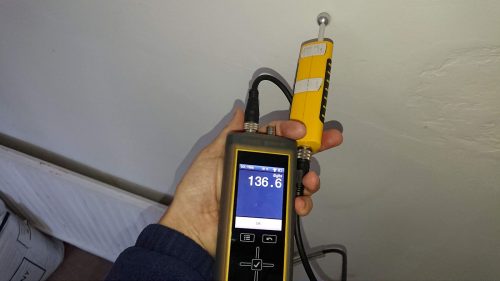
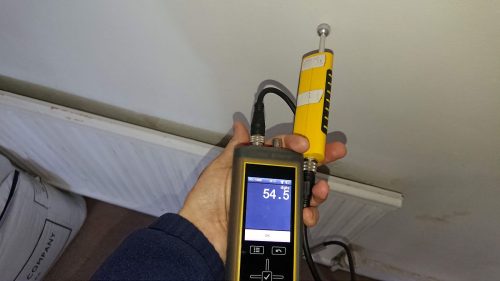
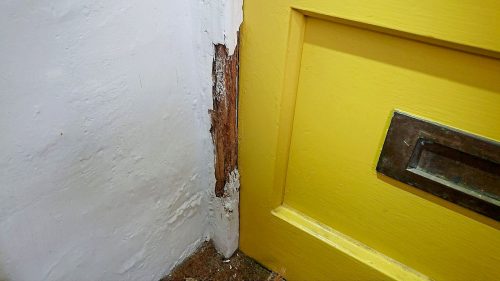
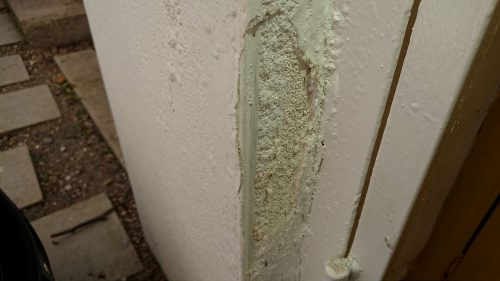
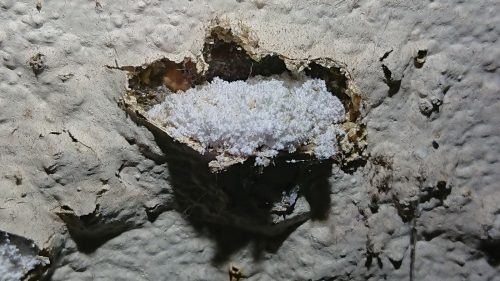
Recommendations
Part of the problem is the rising damp (the property is 150 years old after all) and the presence of cement render and plaster.
Although removing the cement and replacing it with lime would be beneficial to the building, this would be a costly, very labour intensive and disruptive operation. To keep things simple and less messy we have recommended:
- the installation of a magnetic dehydration system to get rid of the rising damp, the primary problem, then at a later point
- re-plastering the affected areas; ideally with a breathable lime-based plaster.

